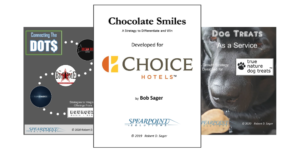This article provides a five-step formula to follow so your efforts will be successful.
It’s been said, “You have to spend money, to make money.” It’s true.
“How much?” is a question asked of me by new and existing business owners. So, I’ve created a list of considerations, based on a few sources, which should prove helpful for any business as a starting point.
First, according to Thomas Minieri, artist, author, entrepreneur, CEO of Minieri & Company, in his 2022 article for Forbes, YEC Council Post, titled How Much Should You Spend on Marketing, “marketing” includes a wide range of functions: everything from branding and website development to communications and sales.
Step One
Begin by knowing and understanding your operational costs and realizing that a portion should be set aside for marketing (branding, promotion, and advertising) your business.
I agree with Minieri, the importance of branding can’t be stressed enough. He states, “your brand is your first impression; it is visuals that convey your products or services and words used to communicate those products and services. Everything from your logo design to sales copy is what makes your brand unique.”
Branding is about perception.
Advertisement
Is your business life FUN – or stressful?
Our Strategies Subscription will help you easily beat the competition, enhance your profits and have more FUN.
Get access to three strategies at no charge by clicking here or on the image below.
Step Two
An important aspect in planning a solid marketing budget is knowing your customer. You should have a clear-cut vision of your target customer persona
- Demographics (age, location, etc.)
- What solves their problem
- Where to reach them.
Step Three
Next, establish your marketing strategy and budget goals.
- What exactly do you want to gain from the money you are spending?
- Where do you desire to be in 3 to 5 years?
Act according to your business vision.
Minieri and I are on the same page regarding the ROI (return on investment) of branding efforts being very difficult or nearly impossible to track. He considers branding an investment that makes every other part of your marketing strategy more effective.
Business owners should anticipate setting aside an initial investment for startup branding, and plan to use additional funds moving forward to further establish and evolve the brand. The good news is ROI for specific marketing efforts can be quite a bit more quantifiable.
Advertisement
Is your business life FUN – or stressful?
Our Strategies Subscription will help you easily beat the competition, enhance your profits and have more FUN.
Get access to three strategies at no charge by clicking here or on the image below.
Step Four
Basing a marketing budget on a percentage of operational budget can be effective, but many variables can make this challenging. With marketing and sales being so closely tied, I encourage my clients to base their initial marketing budgets on desired revenue. In this way, their budget truly reflects the level of success they wish to achieve.
The U.S. Small Business Administration recommends that the average small business with annual revenue less than $5 million should allocate 7-8% of their revenues to marketing costs.
I have seen effective budgets as low as 2-3% of revenue, when invested strategically. Though, the reality is a marketing budget, as a percentage of revenue, can vary quite a bit by industry.
According to the 2022 CMO Survey (cmosurvey.org), which collects and disseminates the opinions of marketing leaders: the B2C sector devotes roughly 15% of revenue to marketing budgets, while the B2B sector allocates about 8%.
A view of budgeting, based on a business’ life stage, could be:
- 3% to 6% to retain current revenues
- 7% to 11% to grow revenues
- 12% + to scale revenues dramatically
Minieri’s rule of thumb is to have two budgets in mind: one to sustain current revenues and another for robust growth.
To maintain current revenue amounts, 5% to 10% of sales allocated towards marketing may suffice. If your aim is rapid growth, then you may need to push that number higher, possibly to 20% or even more. A startup should hold firm to a fixed number for their spend, as revenue may be too low or unpredictable to utilize a percentage of sales as a gauge.
As you begin spending your marketing budget, it’s critical to properly track leads, which can start by streamlining the methods by which prospects can connect with you.
Once you have started tracking your marketing expenditures and leads, you can figure out your customer acquisition cost (CAC).
I appreciate that Minieri summarizes marketing spend into a primary data point: CAC. This is the total cost to get one new customer and includes your branding efforts, advertising spend, marketing team salaries, and sales process costs. To find this number, simply add up all acquisition expenses and divide by the number of customers you acquired in that same timeframe. It is a sound business practice to evaluate your CAC annually, and continually work to lower that number by refining your marketing effectiveness; work smarter, not harder. This can lead to greater profit.
Advertisement
Is your business life FUN – or stressful?
Our Strategies Subscription will help you easily beat the competition, enhance your profits and have more FUN.
Get access to three strategies at no charge by clicking here or on the image below.
Step Five
Flexibility should be a part of every marketing budget. Be ready to pivot and adapt to what you believe will work for your business.
For example: Drop your social media marketing if it isn’t effective and spend that money elsewhere. Perhaps your business would benefit more from distributing tangible rack cards or tri-fold brochures? The allocation of marketing dollars isn’t written in blood. Change as soon as you see the need.
Conclusion
Be ready and willing to spend money on marketing, but carefully study these steps to make the optimal use of your resources. Since there aren’t hard, fast rules for branding and marketing, we make best educated guesses and pivot for effectiveness.
If these steps have piqued your interest and you want to know more or need help establishing a budget, please reach out.

Brian Butkowski is the Owner of Bomb Image as well as Brand Advisor & Designer. He makes it easier for clients to deliver the right message to their customers, by Demystifying Branding & Marketing. Because of this, his clients gain better connection and engagement with their customers – which results in greater revenue.
With over two decades of experience guiding small businesses, Brian plans, produces, and executes tactics that utilize clients’ brands, logos, and messaging. He prides himself on being an objective facilitator, utilizing proven processes to draw out clients’ “right answers,” to achieve their branding and marketing goals.
Related Articles
Health Is Wealth
September 13, 2023
Hidden in Plain Sight
August 17, 2023
That’s A BAD Idea!
June 12, 2023
Does Branding Really Matter?
May 31, 2023
Reinvent and Reimagine
May 4, 2023
Uncovering The Secrets of Color
May 3, 2023








